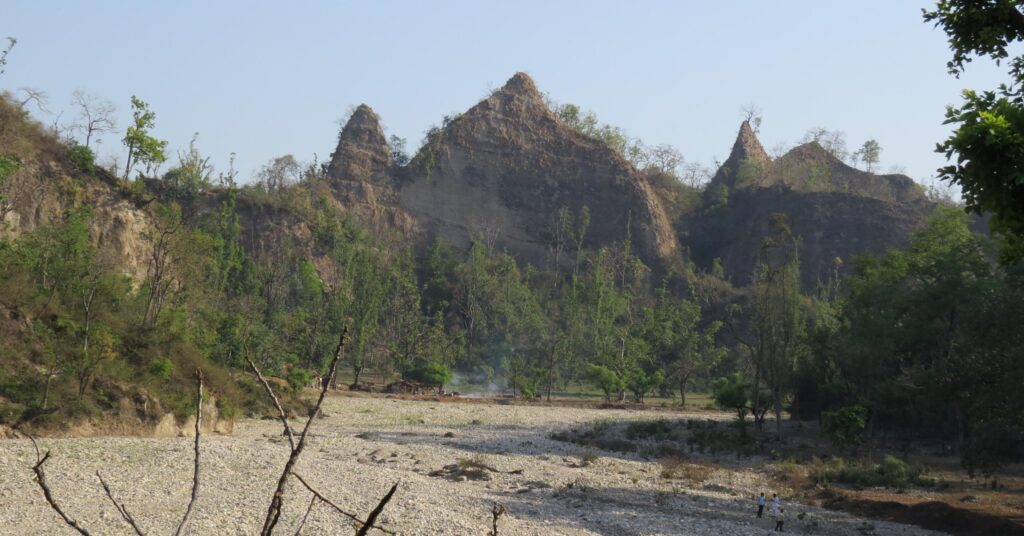Are you curious to know what is bhabar? You have come to the right place as I am going to tell you everything about bhabar in a very simple explanation. Without further discussion let’s begin to know what is bhabar?
In the vast and diverse geography of India, the region of Bhabar stands as a unique and intriguing ecological phenomenon. This transitional zone, characterized by its distinct landscape and ecological significance, plays a vital role in the natural balance of the northern Indian plains. In this blog post, we’ll embark on a journey to explore the enigmatic realm of Bhabar, unraveling its features, ecological importance, and the impact it holds on the surrounding environment.
What Is Bhabar?
Bhabar refers to a narrow belt or zone of land found at the foothills of the Himalayas, stretching across several states in northern India, including Uttarakhand, Uttar Pradesh, and parts of Nepal. This region spans approximately 8 to 16 kilometers in width and runs parallel to the Shiwalik Hills, forming an important ecological transition between the mountains and the plains.
Characteristics Of Bhabar:
- Terrain and Geology: Bhabar is characterized by its rocky and coarse terrain, comprising gravel, rocks, and pebbles. This area is formed due to the deposition of debris and sediments carried down by rivers from the Himalayas.
- Sparse Vegetation: The rocky nature of the Bhabar region restricts the growth of vegetation. However, some hardy plants like acacia, bamboo, and grasses manage to thrive in this harsh environment.
- Aquifer Formation: One of the significant features of Bhabar is its role in forming an underground aquifer. The loose gravel and rocks allow rainwater to percolate and recharge the groundwater table, providing a vital source of water in the region.
Ecological Importance Of Bhabar:
- Groundwater Recharge: The porous nature of the Bhabar region acts as a natural filter, allowing rainwater to seep through, recharging the aquifers and contributing to the replenishment of groundwater reserves.
- Wildlife Habitat: Despite its sparse vegetation, Bhabar serves as a habitat for various wildlife species adapted to arid and rocky environments, including certain species of birds, reptiles, and small mammals.
- Flood Mitigation: The permeable nature of Bhabar aids in reducing the intensity of floods in the plains by absorbing excess water during the monsoon season, thereby minimizing the risk of flooding downstream.
Let’s find some more interesting topics like these here askcorran.
Human Interaction And Challenges:
Over time, human activities such as deforestation, agricultural expansion, and infrastructure development have impacted the Bhabar region. These activities have altered the natural landscape, leading to concerns about soil erosion, loss of biodiversity, and disruptions in groundwater recharge mechanisms.
Conclusion:
Bhabar stands as a captivating and vital ecological zone, serving as a transitional space between the Himalayas and the plains of northern India. Its unique characteristics, from rocky terrains to groundwater recharge mechanisms, showcase the intricate balance between nature and human interaction. Preserving and understanding the ecological significance of Bhabar is crucial for maintaining the delicate equilibrium of this fascinating landscape and its role in sustaining the surrounding ecosystems and communities.
FAQ
What Is The Bhabar Class 9?
Bhabar is a narrow belt of about 8 to 16 km in width lying parallel to the slopes of the Shiwaliks in Uttarakhand state of India. This belt is formed as a result of the deposition of pebbles by the rivers descending from the mountains in the North.
What Is Bhabar Class 2?
Bhabar is one of the four relief features found in the Northern plains. It is parallel to the Shiwaliks. It has been formed as a result of the pebbles brought by the rivers from the mountains. Special features: It is a narrow belt of width ranging from 8 to 16 Km.
What Is Bhabar Soil Class 9?
Bhabar is a hilly area that is composed of loose rocks and boulders. Bhangar is an area that is composed of clay and sand. Khadar is an area that is composed of alluvial soil. Terai is a low-lying area that is composed of marshy land. Characteristics of Bhabar, bhangar, khadar and terai.
What Is Bhabhar Region?
Bhabar, sometimes also called Bhabhar, are the plains located in Uttarakhand, India. It is located in the southern region of the Shivalik range of hills and lower Himalayas. Bhabar is a thin band that stretches about 8–16 kilometers.
I Have Covered All The Following Queries And Topics In The Above Article
What Is The Bhabar
What Is Bhabar Class 9
What Is The Bhabar Class 9
What Is Bhabar In Geography
What Is Bhabar Geography
What Is Bhabar Class 9
What Is Bhabar Class 7
What Is Bhabar Class 10
What Is Bhabar In Short
What Is Bhabar Class 4
What Is Bhabar In Hindi
Distinguish Between Bhangar And Khadar
What Is Bhabar







